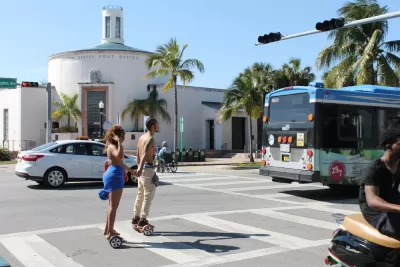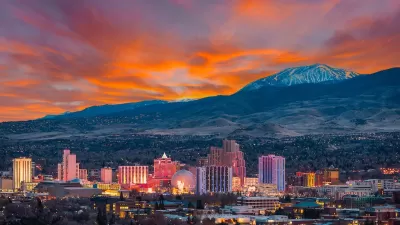Vertically integrated mobility as a service options can offer great benefit to users, but unless cities create the right framework, it could stifle innovation and competition, as well as making the playing field too difficult for small companies.

Cities are starting to see a vertical integration of the Mobility as a Service (MaaS) landscape. A number of companies (see examples of Uberand Lyft) are realizing the opportunity to provide multiple MaaS options to their clients and not only focus on one part of the mobility pie. Rideshare, bikeshare, e-scooters, etc. all have the possibility of on one hand cannibalizing one another and on the other being an entryway to a broader set of possible MaaS options. By integrating services vertically, companies can offer a broader suite of services and ensure that all transactions are within their platform (and their bottom line).
While vertically integrated MaaS options will have large benefits for users, it also points to a potential future where a few dominant companies offer a Helsinki-likevertically integrated mobility option. As a consumer you may end up needing to decide if you want to subscribe to the Lyft MaaS suite, the Uber MaaS suite, or the Waymo MaaS suite. A large concern with this is that it will stifle competition and keep small companies out of the marketplace. Cities can play a lead role in ensuring that this doesn't happen so that their residents have a wider range of options and the economic benefits of MaaS are not restricted to a few large, key players.
The three things that are necessary for an open MaaS platform are:
- Shared route/cost/time information – There are already a number of examples of this happening thanks, in large part to Google’s leadership on creating GTFS. A number of apps – including Google’s own Google Maps – let you compare travel options, complete with time and cost information. The next generation of these apps needs to start thinking about how show expanded travel options which mix modes (the height of the MaaS vision). It would be great to see a travel option that includes bikeshare from your house to the transit stop, the transit trip itself, and then a scooter option for the last-mile. More and more, this is exactly the types of trips we will all be making in a MaaS world.
- Uniform payment platform – Critical in making all of this work is a single payment platform that allows easy movement from one mode and service to another. This will facilitate use of the most efficient mode of travel and will allow small companies to compete with larger ones. While uniform payment has been a challenge in many parts of the US, there are examples abroad that show this is absolutely possible. For example, OV Chipcardin the Netherlands is a single payment platform that is used by train, tram, bus, carshare and bikeshare companies. It is simple to plug into the system and from the user’s perspective, makes transportation choices easy to make.
- Multi-company subscription services – Both of the points above create the opportunity for multi-company subscription services where movement between MaaS modes becomes easy and economically beneficial. The difficulty will be in finding the framing and levers to bring private sector companies along and not have them each create their own transportation fiefdoms. One large lever will be that, if this shared subscription marketplace can be created, companies will want to join simply to have access to users. If they are outside of it, their competitors will get the rides. It is a tricky proposition and will require a good amount of thinking and coordination (both with companies and with regulatory bodies) to make this work, but the potential upside is tremendous for user experience, economic opportunity, and for the overall efficient use of the transportation network.
This is an important moment where cities should be shifting their thinking from how to deal with a continuing series of mode innovations (e.g. e-scooters being the latest one) to a more expansive and forward thinking approach that if focused on outcomes and on creating a broad platform that can accommodate current and future transportation options in a level playing field.
FULL STORY: Ensuring the Benefits of Vertically Integrated MAAS

Planetizen Federal Action Tracker
A weekly monitor of how Trump’s orders and actions are impacting planners and planning in America.

Maui's Vacation Rental Debate Turns Ugly
Verbal attacks, misinformation campaigns and fistfights plague a high-stakes debate to convert thousands of vacation rentals into long-term housing.

Restaurant Patios Were a Pandemic Win — Why Were They so Hard to Keep?
Social distancing requirements and changes in travel patterns prompted cities to pilot new uses for street and sidewalk space. Then it got complicated.

Charlottesville Temporarily Has No Zoning Code
A judge ordered the Virginia city to throw out its newly revised zoning code, leaving permitting for new development in legal limbo.

In California Battle of Housing vs. Environment, Housing Just Won
A new state law significantly limits the power of CEQA, an environmental review law that served as a powerful tool for blocking new development.

Boulder Eliminates Parking Minimums Citywide
Officials estimate the cost of building a single underground parking space at up to $100,000.
Urban Design for Planners 1: Software Tools
This six-course series explores essential urban design concepts using open source software and equips planners with the tools they need to participate fully in the urban design process.
Planning for Universal Design
Learn the tools for implementing Universal Design in planning regulations.
Heyer Gruel & Associates PA
JM Goldson LLC
Custer County Colorado
City of Camden Redevelopment Agency
City of Astoria
Transportation Research & Education Center (TREC) at Portland State University
Jefferson Parish Government
Camden Redevelopment Agency
City of Claremont





























